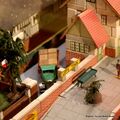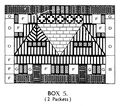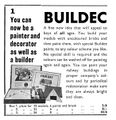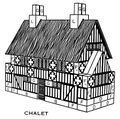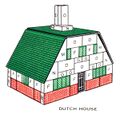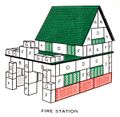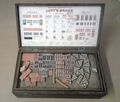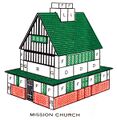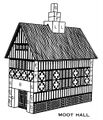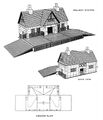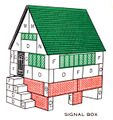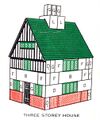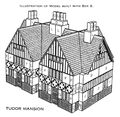Category:Lotts Bricks: Difference between revisions
(+ timeline adapted from Gordon's cabinet sign) |
({{1918}}) |
||
| (7 intermediate revisions by the same user not shown) | |||
| Line 1: | Line 1: | ||
{{Toymaker}} | {{Toymaker|Lotts_Bricks_logo,_1930s.jpg|Date1=1918}} | ||
{{Box|Lotts_Bricks_full-page_advert_(MM_1924-11).jpg|1924: Full-page advert for Lott's Bricks in Meccano Magazine|380}} | {{Box|Lotts_Bricks_full-page_advert_(MM_1924-11).jpg|1924: Full-page advert for Lott's Bricks in Meccano Magazine. Includes Set 6|380}} | ||
{{Box|Lotts_Bricks_New_Series_(MM_1941-01).jpg|1941 advert for Lott's Bricks, New Series|380}} | |||
{{Box|School,_design,_Lotts_Tudor_Blocks.jpg|Design for a Lott's Bricks Schoolhouse|380}} | |||
'''Lott's Bricks''' Ltd was started by '''E.A. Lott''', and produced simple artificial-stone blocks in reasonably naturalistic colours, in rectangular and wedge shapes from ~1918 onwards. The blocks were stacked without any special pegs or joints, relying on weight and friction to stay together. Roofs were hinged pieces of printed cardboard. | '''Lott's Bricks''' Ltd was started by '''E.A. Lott''', and produced simple artificial-stone blocks in reasonably naturalistic colours, in rectangular and wedge shapes from ~1918 onwards. The blocks were stacked without any special pegs or joints, relying on weight and friction to stay together. Roofs were hinged pieces of printed cardboard. | ||
| Line 12: | Line 14: | ||
* '''1920s''' – Colour revision: base blocks are now dark red rather than grey, and lintels are blue. | * '''1920s''' – Colour revision: base blocks are now dark red rather than grey, and lintels are blue. | ||
* '''1920s''' - '''[[Lott's Tudor Blocks]]''' introduced, with black wooden beamwork. Tudor blocks later improved to include raised herringbone-pattern brickwork for the lower blocks, raised beamwork, and windows. | * '''1920s''' - '''[[Lott's Tudor Blocks]]''' introduced, with black wooden beamwork. Tudor blocks later improved to include raised herringbone-pattern brickwork for the lower blocks, raised beamwork, and windows. | ||
* '''1931''' - Lott's Tudor Accessories. | * '''1931''' - Lott's Tudor Accessories. | ||
* '''~1931''' – Lott's church-style blocks for church windows and peak-topped doors. | * '''~1931''' – Lott's church-style blocks for church windows and peak-topped doors. | ||
* '''1932(?)''' – '''[[Lodomo]]''' sets introduced, with extra detailing specifically for houses and small commercial buildings, with textured and painted blocks representing windows and doors, and "lower" wall blocks textured and painted to look like brickwork. | |||
''By 1934, the original white cardbard fencing been replaced by printed fencing.'' | ''By 1934, the original white cardbard fencing been replaced by printed fencing.'' | ||
* '''1938''' – Lott's New Series Bricks. "New Series" packaging is made more attractive with silver-coloured retail boxes with transparent "windows". Brick-pattern bases and cardboard roofs are now orange rather than red. | * '''1938''' – Lott's New Series Bricks. "New Series" packaging is made more attractive with silver-coloured retail boxes with a transparent "windows" to let customers peek at the contents. Brick-pattern bases and cardboard roofs are now orange rather than red. | ||
* '''1940s''' – Purple windows! | * '''1940s''' – Purple windows! | ||
* '''~1948''' – Lott's '''[[Wonderbrix]]''' launched, with new-pattern blocks for making half-size | * '''~1948''' – Lott's '''[[Wonderbrix]]''' launched, with new-pattern blocks for making half-size buildings suitable for 00-gauge model railways. | ||
''The final Lotts Bricks sets came with plastic "window" blocks, which were open on the back, and had blue window frames painted onto the textured front.'' | |||
==In the Museum== | ==In the Museum== | ||
The Museum has a "'''Lotts Town'''" display of various built houses in the Lotts range in [[Arch Two]], along with various boxes and packaging. | The Museum has a "'''Lotts Town'''" display of various built houses in the Lotts range in [[Arch Two]], along with various boxes and packaging. | ||
==~1920 advertising text:== | |||
{{Quotation2|<h4>Lott's Bricks</h4> | |||
'''The Game that BUILDS the Brain''' | |||
WITH Lott's Toy Bricks all manner of miniature real-life models may be built from plans by Mr. Arnold Mitchell, the well-known architect. Houses, Churches, Bridges, Towers, and so on. The Bricks are made of solid, artificial stone in convenient sizes, and with each set are chimneys and jolly red roofs. Each game develops not only the constructive, but the ''creative'' faculties. A new book of original Real-Life Games, printed in colours, and with an introductory letter from Mr. H.G. Wells, will be sent free upon request. | |||
|Author=Lotts Bricks Ltd.|Publication=The Strand Magazine|Date=~1920}} | |||
==1928 advertising text:== | |||
{{Quotation2|<h4>WHO IS YOUR BUILDER?</h4> | |||
Does that little world, or town, which is your model railway display, boast a form of builders? Or is it the Tinsmith or the Stationer who get all the building contracts? If this is the case, it just won't do. It's not real enough. You'll have to employ a builder in the future, if you want your friends to believe that your display is like the real thing. Suppose you appoint yourself, or your young brother, as local builder and contractor. A builder's charges would be no higher than the Tinsmith's and if they are more than the Stationer's, at least real bricks last a thousand times longer than cardboard. | |||
As for the plans and materials, ask your usual dealer for full particulars of Lott's Bricks, the British-Made Stone Building Bricks. Then you will soon learn how you can construct in solid stone, models of all the buildings found in town and countryside, and on railway and farm. | |||
|Author=Lott's Bricks Ltd|Publication=Meccano Magazine|Date=March 1928}} | |||
{{links}} | {{links}} | ||
Latest revision as of 16:19, 8 January 2020
| Toy Brands and Manufacturers |
|---|
Lotts Bricks |
| 1918 - |
1924: Full-page advert for Lott's Bricks in Meccano Magazine. Includes Set 6 [image info]
1941 advert for Lott's Bricks, New Series [image info]
Design for a Lott's Bricks Schoolhouse [image info]
Lott's Bricks Ltd was started by E.A. Lott, and produced simple artificial-stone blocks in reasonably naturalistic colours, in rectangular and wedge shapes from ~1918 onwards. The blocks were stacked without any special pegs or joints, relying on weight and friction to stay together. Roofs were hinged pieces of printed cardboard.
Although early sets were fairly primitive, Lotts expanded the range with sets of special bricks for window pieces or Tudor-style frontages. Lotts continued until 1960, by which time more "modern" plastic systems like Lego had become popular.
The scale of the resulting buildings was designed to match gauge 0 railways and accessories.
Lott's Bricks timeline
- 1917 – Patented.
- 1918 – Lott's Bricks launched. Buildings are two-tone, with grey "lower" blocks and neutral-coloured upper blocks and lintels.
- 1920s – Colour revision: base blocks are now dark red rather than grey, and lintels are blue.
- 1920s - Lott's Tudor Blocks introduced, with black wooden beamwork. Tudor blocks later improved to include raised herringbone-pattern brickwork for the lower blocks, raised beamwork, and windows.
- 1931 - Lott's Tudor Accessories.
- ~1931 – Lott's church-style blocks for church windows and peak-topped doors.
- 1932(?) – Lodomo sets introduced, with extra detailing specifically for houses and small commercial buildings, with textured and painted blocks representing windows and doors, and "lower" wall blocks textured and painted to look like brickwork.
By 1934, the original white cardbard fencing been replaced by printed fencing.
- 1938 – Lott's New Series Bricks. "New Series" packaging is made more attractive with silver-coloured retail boxes with a transparent "windows" to let customers peek at the contents. Brick-pattern bases and cardboard roofs are now orange rather than red.
- 1940s – Purple windows!
- ~1948 – Lott's Wonderbrix launched, with new-pattern blocks for making half-size buildings suitable for 00-gauge model railways.
The final Lotts Bricks sets came with plastic "window" blocks, which were open on the back, and had blue window frames painted onto the textured front.
In the Museum
The Museum has a "Lotts Town" display of various built houses in the Lotts range in Arch Two, along with various boxes and packaging.
~1920 advertising text:
Lott's Bricks
The Game that BUILDS the Brain
WITH Lott's Toy Bricks all manner of miniature real-life models may be built from plans by Mr. Arnold Mitchell, the well-known architect. Houses, Churches, Bridges, Towers, and so on. The Bricks are made of solid, artificial stone in convenient sizes, and with each set are chimneys and jolly red roofs. Each game develops not only the constructive, but the creative faculties. A new book of original Real-Life Games, printed in colours, and with an introductory letter from Mr. H.G. Wells, will be sent free upon request.
— , Lotts Bricks Ltd., , The Strand Magazine, , ~1920
1928 advertising text:
WHO IS YOUR BUILDER?
Does that little world, or town, which is your model railway display, boast a form of builders? Or is it the Tinsmith or the Stationer who get all the building contracts? If this is the case, it just won't do. It's not real enough. You'll have to employ a builder in the future, if you want your friends to believe that your display is like the real thing. Suppose you appoint yourself, or your young brother, as local builder and contractor. A builder's charges would be no higher than the Tinsmith's and if they are more than the Stationer's, at least real bricks last a thousand times longer than cardboard.
As for the plans and materials, ask your usual dealer for full particulars of Lott's Bricks, the British-Made Stone Building Bricks. Then you will soon learn how you can construct in solid stone, models of all the buildings found in town and countryside, and on railway and farm.
— , Lott's Bricks Ltd, , Meccano Magazine, , March 1928
External links
Subcategories
This category has the following 5 subcategories, out of 5 total.
B
- Buildec (2 F)
L
- Lodomo (Lotts Bricks) (3 P, 3 F)
- Lotts Bricks model railway buildings (2 P, 9 F)
- Lotts Tudor Blocks (5 P, 21 F)
W
- Wonderbrix (Lotts Bricks) (2 P)
Pages in category ‘Lotts Bricks’
The following 19 pages are in this category, out of 19 total.
F
L
Media in category ‘Lotts Bricks’
The following 44 files are in this category, out of 44 total.
- Area 24.jpg 800 × 800; 422 KB
- Box 4, contents, Lotts Tudor Blocks.jpg 1,800 × 1,317; 476 KB
- Box 5, contents, Lotts Tudor Blocks.jpg 1,800 × 1,584; 635 KB
- Box 6, contents, Lotts Tudor Blocks.jpg 1,800 × 1,187; 423 KB
- Buildec, Lotts Bricks (MM 1936-10).jpg 1,162 × 1,200; 264 KB
- Chalet, design, Lotts Tudor Blocks.jpg 1,600 × 1,588; 679 KB
- Dutch House flat top, design, Lotts Bricks.jpg 1,200 × 1,141; 295 KB
- Dutch House, design, Lotts Bricks.jpg 1,600 × 1,267; 514 KB
- Fire Station, design, Lotts Bricks.jpg 1,200 × 1,171; 289 KB
- Fishing Lodge, design, Lotts Tudor Blocks.jpg 1,200 × 940; 226 KB
- For Your Model Railway, Lotts Bricks (MM 1932-03).jpg 1,170 × 1,600; 505 KB
- Lift Bridge, design, Lotts Bricks.jpg 1,200 × 943; 223 KB
- Lodomo Railway Station, Lotts Bricks (MM unk).jpg 1,600 × 1,067; 382 KB
- Lotts Bricks (GamCat 1932).jpg 1,800 × 1,217; 460 KB
- Lotts Bricks classic house.jpg 1,024 × 768; 546 KB
- Lotts Bricks Dealer's Cabinet open.jpg 903 × 768; 102 KB
- Lotts Bricks Dealer's Cabinet unpacked.jpg 768 × 953; 107 KB
- Lotts Bricks designs ad.jpg 1,172 × 2,997; 468 KB
- Lotts Bricks for your Model Railway (MM 1933-12).jpg 1,800 × 1,181; 431 KB
- Lotts Bricks for your Model Railway (MM 1934-06).jpg 1,600 × 1,059; 324 KB
- Lotts Bricks for your Railway or Farm (MM 1927-02).jpg 2,200 × 1,453; 941 KB
- Lotts Bricks full-page advert (MM 1924-11).jpg 1,524 × 2,000; 503 KB
- Lotts Bricks logo, 1930s.jpg 1,337 × 620; 92 KB
- Lotts Bricks New Series (MM 1941-01).jpg 1,600 × 745; 218 KB
- Lotts Bricks, Lotts Chemistry (MM 1935-06).jpg 886 × 2,020; 298 KB
- Lotts Bricks, Lotts Chemistry Sets (MM 1935-08).jpg 1,200 × 805; 251 KB
- Lotts Christmas Parade (MM 1939-12).jpg 918 × 1,200; 323 KB
- Lotts New Series Bricks (MM 1939-012).jpg 807 × 1,200; 196 KB
- Lotts Tudor Blocks, manual 4-6.jpg 1,800 × 1,250; 441 KB
- Lotts Tudor Bricks and Buildec (MM 1939-012.jpg 1,200 × 965; 213 KB
- Manor House, design, Lotts Tudor Blocks.jpg 1,308 × 1,800; 603 KB
- Memorial Hall, design, Lotts Tudor Blocks.jpg 1,200 × 930; 364 KB
- Mission Church, design, Lotts Tudor Blocks.jpg 1,167 × 1,200; 313 KB
- Moot Hall, design, Lotts Tudor Blocks.jpg 1,033 × 1,200; 379 KB
- Pair of Cottages, design, Lotts Tudor Blocks.jpg 1,200 × 941; 314 KB
- Park Entrance, design, Lotts Tudor Blocks.jpg 1,800 × 958; 413 KB
- Railway Box, Lotts Bricks (MM 1930-10).jpg 2,200 × 1,475; 1.04 MB
- Railway Station, design, Lotts Tudor Blocks.jpg 1,541 × 1,800; 537 KB
- School, design, Lotts Tudor Blocks.jpg 1,264 × 1,800; 727 KB
- Signal Box, design, Lotts Bricks.jpg 1,130 × 1,200; 330 KB
- Station Models, Lotts Bricks (MM 1936-07).jpg 909 × 1,800; 384 KB
- Three Storey House, design, Lotts Tudor Blocks.jpg 1,001 × 1,200; 284 KB
- Tudor Mansion, design, Lotts Tudor Blocks.jpg 1,600 × 1,557; 686 KB
- Window and Door Accessory Sets, Lotts Bricks (MM 1931-02).jpg 684 × 1,800; 281 KB




